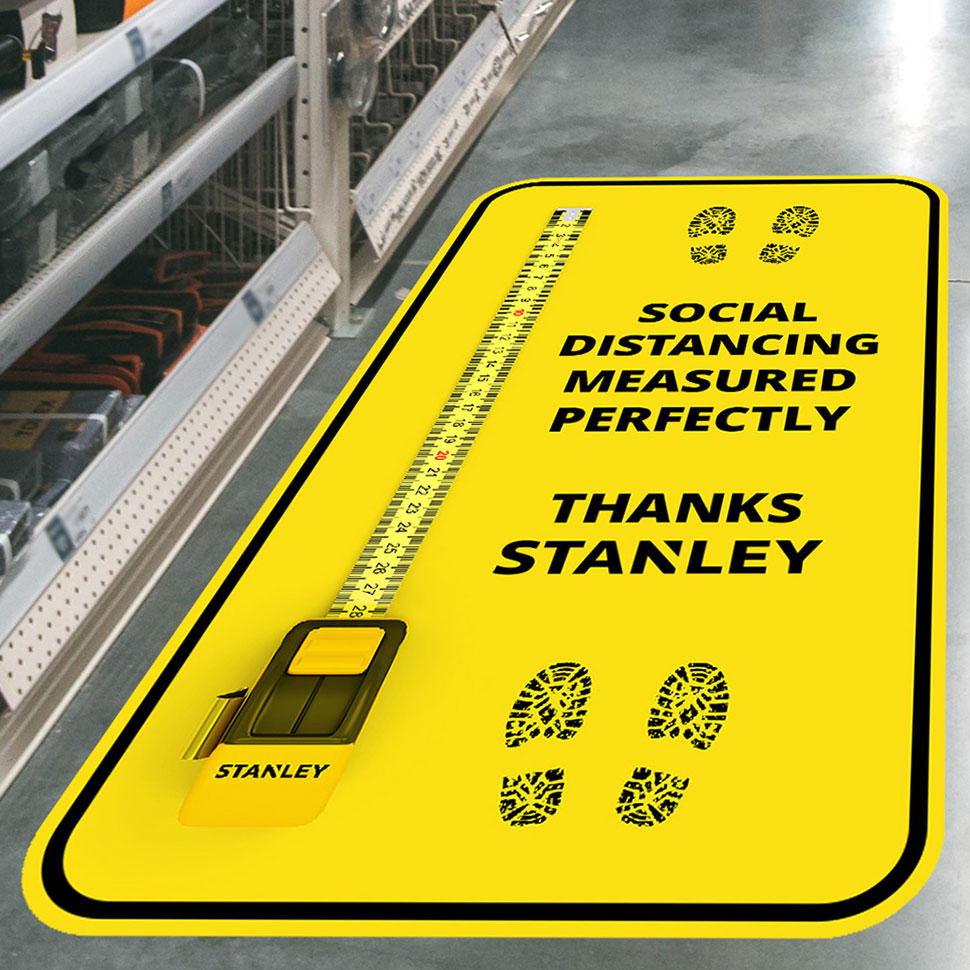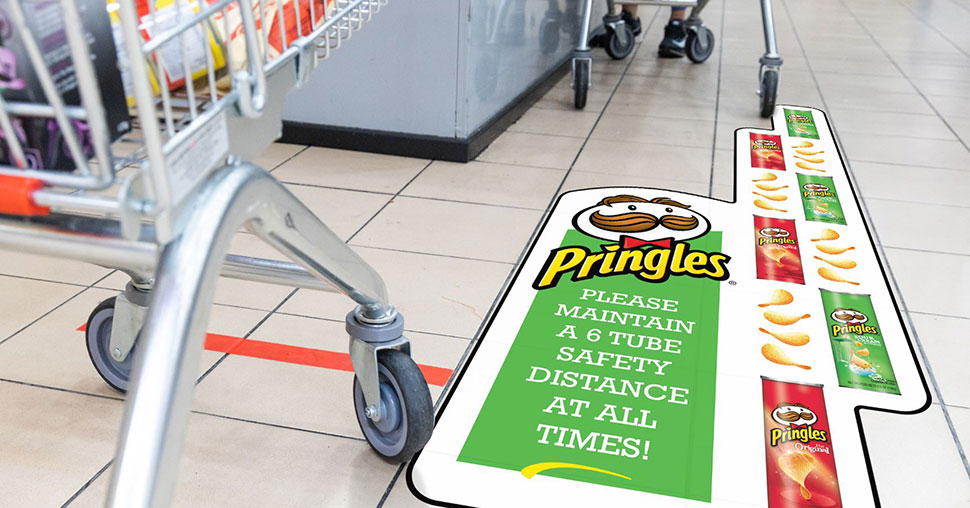Simply put, floor graphics have played a significant role in the battle against Covid-19, helping us keep a safe distance from each other when out and about, as well as directing people around one-way systems in a whole host of environments including shops, schools and vaccination centers.
With floor graphics having showcased their undeniable value during times of Covid, it is now time to look to the future to see what sort of a role these applications might have as we begin to move out of the pandemic and towards a more “normal” world.
Sitting up and taking notice
If there is one thing that is unquestionable about floor graphics, it is that consumers do take notice of these applications – something that was very clear to see when it came to social distancing markers and one-way systems. After all, customers are always looking down at their phone, so why not give them something else to look at and showcase your products at the same time?
Consumers’ new-found familiarization with floor graphics also opens a host of opportunities for new forms of interaction. For example, retailers can print specific offers on the graphic and direct the customer to where this can be found in the store. A play on the one-way systems that we have become used to in Covid time, if you will. A study by the Center for Advanced Retail and Technology reported sales increased by 17% for products featured on floor graphics in their product aisles.
Get creative and push the boundaries
While Covid may have slowed and limited creativity in some sectors, this was certainly not the case for floor graphics, as retailers and brands took the opportunity to explore the many different ways they could use this media to promote their products while keeping people safe.
Some excellent conceptual examples could include a proposed floor graphic encouraging shoppers to remain at least six tubes of Pringles apart from each other, while a DIY brand might feature a giant tape measure on its social distancing graphics.
Flexibility and adaptability are key with floor graphics
What makes floor graphics so unique is that they can be used in almost any environment that you can think of and for all sorts of reasons.
Be it promoting new products in shops and supermarkets; serving as way-finding directions in hospitals and event venues; or even educating pupils and students in schools, colleges and universities. Floor graphics come in such an array of forms they are sure to have a major role to play in the post-pandemic period and beyond.
This flexibility is also true in terms of the surfaces that floor graphics can be applied to, both indoor and outdoor. Films and vinyls, including those available from Drytac, are suitable for use on floor tiles, wood laminate flooring and short pile carpet indoors, as well as concrete, asphalt, tarmac and concrete tiles outside.
When it comes to floor graphics, there is no single product that will work on all jobs; it is down to you to establish which is the most effective and suitable solution for each individual project.
Once equipped with the right material, you can then get creative and continue to stretch the boundaries of what has become an incredibly innovative and imaginative sector that will only continue to grow.
Authored by Brad Haupt, USA Midwest and Southwest Territory Manager at Drytac.
To find out more about Drytac and its floor graphics products, please click here
For further information on Drytac’s products and services, click here




